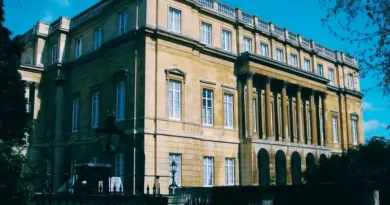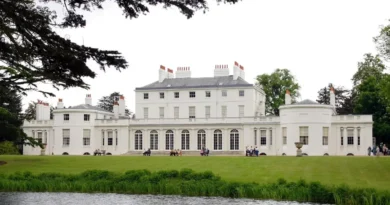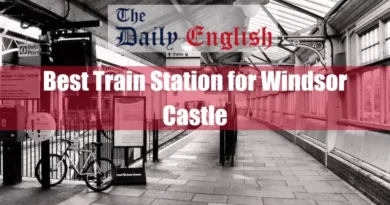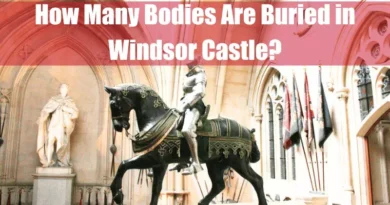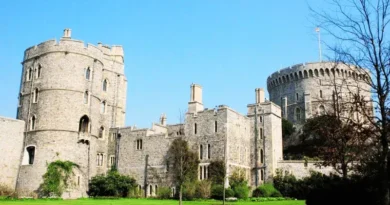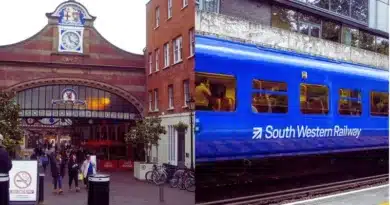Are There Stables at Windsor Castle
Yes, there are private stables at Windsor Castle that are not open to the public. These stables house horses and carriages used by the royal family, including some carriages used for official ceremonies. The stables likely also house horses for transportation within the castle grounds.
You can visit the Royal Mews in London if you want to see royal carriages and horses. This working stables complex is open to the public and showcases many state vehicles and horses used by the monarchy.
Key Takeaways
| Key Aspect | Details |
|---|---|
| Privacy | The Windsor Castle stables are private and not open to the public, unlike the Royal Mews in London. |
| Purpose | They serve as a working facility for the Royal Family, housing carriages and possibly vehicles used within the grounds. |
| Royal Horses | They may stable horses for riding and pulling carriages, potentially including the famous Windsor Grey horses (location not officially confirmed). |
| Historic Significance | Stables have existed on the grounds since the 13th century, evolving with transportation needs and reflecting a blend of architectural styles. |
| Visibility | The public can occasionally glimpse the stables and horses during processions or special events. |
| Future Access | There are no plans to open the stables to the public, but occasional views through official events or channels might be possible. |
I. Horses and History: Exploring the Stables at Windsor Castle
Windsor Castle, a majestic royal residence steeped in history, holds secrets and treasures within its walls. While the State Apartments and opulent rooms capture the imaginations of many, another intriguing aspect exists beyond the public eye: the private stables at Windsor Castle.
A. Working Stables, Not Public Attractions:
Unlike the Royal Mews at Buckingham Palace, which functions as both a working facility and a tourist attraction, the stables at Windsor Castle are solely a working facility, closed to the public. They primarily serve practical purposes, housing:
- Carriages: These include the magnificent Ascot Landau, used for the annual Royal Ascot procession, and other state coaches utilized for ceremonial occasions.
- Vehicles: Cars and motorized carriages employed for transportation within the Windsor Great Park are also likely kept here.
- Riding Horses: A smaller number of horses for riding might be stabled here rather than pulling carriages.
B. A Glimpse into the Past:

Though off-limits to visitors, the history of the Windsor Castle stables offers a fascinating glimpse into the past. Records indicate stables existing on the grounds since the 13th century, catering to the royal equestrian needs. Over time, they evolved alongside the evolving modes of transport, likely housing not just horses but also carriages in separate locations, and later, automobiles.
C. Intriguing Details and Royal Connections:
While details about the current stables remain discreet, snippets of information from various sources paint a picture:
- Windsor Greys: The location of the stables for these majestic grey horses, synonymous with the Royal Family, is not publicly confirmed. They might be stabled at Windsor Castle, but there’s a possibility they are housed elsewhere.
- Dedicated Staff: Skilled grooms and carriage staff likely maintain the horses and vehicles, ensuring their readiness for any occasion.
- Occasional Public Peeks: During certain events, glimpses of the stables might be possible, for instance, when carriages leave for processions, or the castle grounds are open for specific events.
II. The Future of the Royal Mews:
As a working facility crucial for royal events, the Windsor Castle Mews will likely remain closed to the public in the foreseeable future. However, their historic significance and role in supporting the Royal Family’s tradition continue to pique public interest.
There is currently no public information about any “future initiatives” to make the Mews more accessible. However, occasional glimpses during specific events or through official channels like social media posts might be a possibility.
Despite the veil of secrecy, the very existence of the Windsor Castle Mews adds another layer of intrigue to this historic fortress. As the horses and carriages within continue to serve the Royal Family, they silently contribute to the rich tapestry of tradition and pageantry that defines Windsor Castle.
III. The Architecture of Windsor Castle Stables
Due to the private nature of the Windsor Castle Stables, details about their architecture are scarce. However, based on historical context, we can make some educated guesses:
A. Historical Influences:
- Records suggest stables existed on the grounds since the 13th century. Early architecture likely followed medieval styles, but specifics are unknown.
- As transportation modes modernized, the architecture likely adapted to accommodate carriages and potentially automobiles (though the extent is unclear).
- Queen Victoria’s reign might have seen some architectural advancements, but concrete details are unavailable without access to private records.
B. Architectural Features:
- Historically, stables often adopted a courtyard layout, which could be present at Windsor Castle.
- Due to its long history, architecture might blend elements from different eras, but the specific styles are unknown.
- As a working facility, functionality likely precedes elaborate ornamentation. Spacious stalls, efficient circulation, and proper ventilation are expected features.
Overall, the true architectural details of the Windsor Castle Stables remain a mystery. However, understanding the historical context allows us to make some reasonable assumptions about their possible features.
IV. Conclusion: A Window into Hidden History
While the public may never enter the Windsor Castle Mews, their fascinating story can spark our imagination. From medieval origins to their continued use today, these stables echo centuries of royal history. Though shrouded in secrecy, their role in upholding tradition and maintaining the grandeur of the monarchy adds another layer of intrigue to this iconic castle. Perhaps one day, a glimpse into their hidden architecture or a peek at the majestic horses housed within will become a reality, further enriching our understanding of this historic treasure.
FAQ
Are the stables at Windsor Castle the same as the Royal Mews?
No, the stables at Windsor Castle are separate from the Royal Mews in London. The stables at Windsor are private and not open to the public, while the Royal Mews is a working facility and a tourist attraction.
Can visitors see any horses at Windsor Castle?
Visitors cannot access the stables or see horses at Windsor Castle. However, you may catch glimpses of carriages or horses during royal processions or special events.
What types of horses are kept at the Windsor Castle stables?
While specific details are not public, the stables likely house Windsor Greys and other horses used for ceremonial purposes or transportation within the castle grounds.
How are the stables maintained?
Skilled staff, including grooms and caretakers, maintain the stables, ensuring the horses and carriages are in top condition for royal use.
Are the stables at Windsor Castle historically significant?
Yes, stables have existed on the grounds since the 13th century. Over time, they evolved to accommodate the changing needs of the monarchy, including the transition from horse-drawn carriages to motor vehicles.
Do the Windsor Castle stables host any events?
The stables are private and do not host public events. Occasionally, glimpses of their use may be seen during royal ceremonies or processions.
Are the Windsor Castle stables architecturally significant?
While details are scarce, historical records suggest the stables may reflect a blend of medieval and later architectural styles designed for functionality rather than grandeur.
Where are Windsor Greys typically housed?
The exact location of Windsor Grey’s housing is not confirmed, but they may be stabled at Windsor Castle or a nearby location within the royal estate.
Can members of the public volunteer or work at the stables?
The stables are staffed by dedicated royal employees, and public involvement opportunities are unavailable.
Are there plans to open the Windsor Castle stables to the public?
There are no known plans to open the stables to the public. However, royal events and social media may offer occasional insights into their role and activities.




